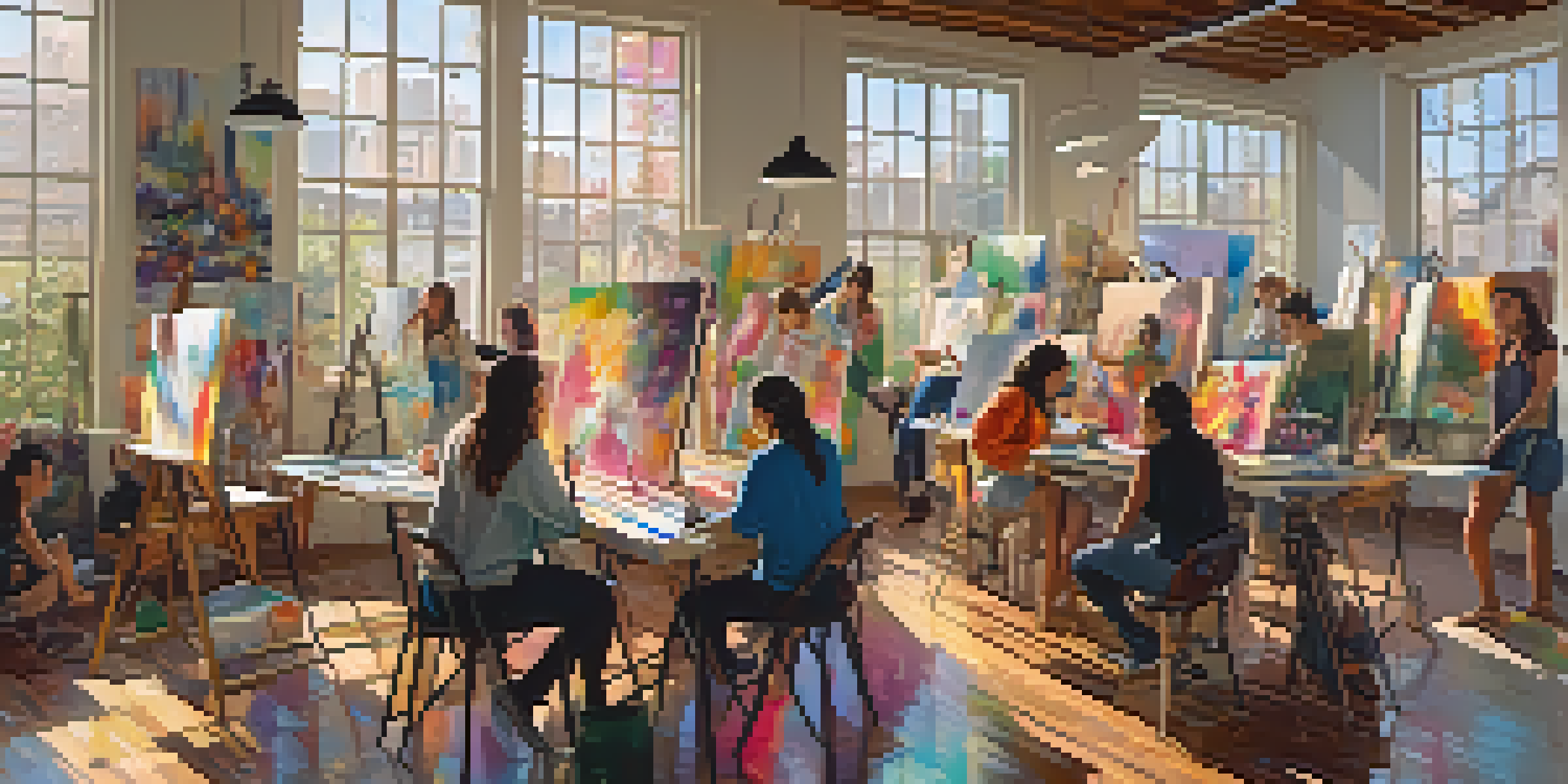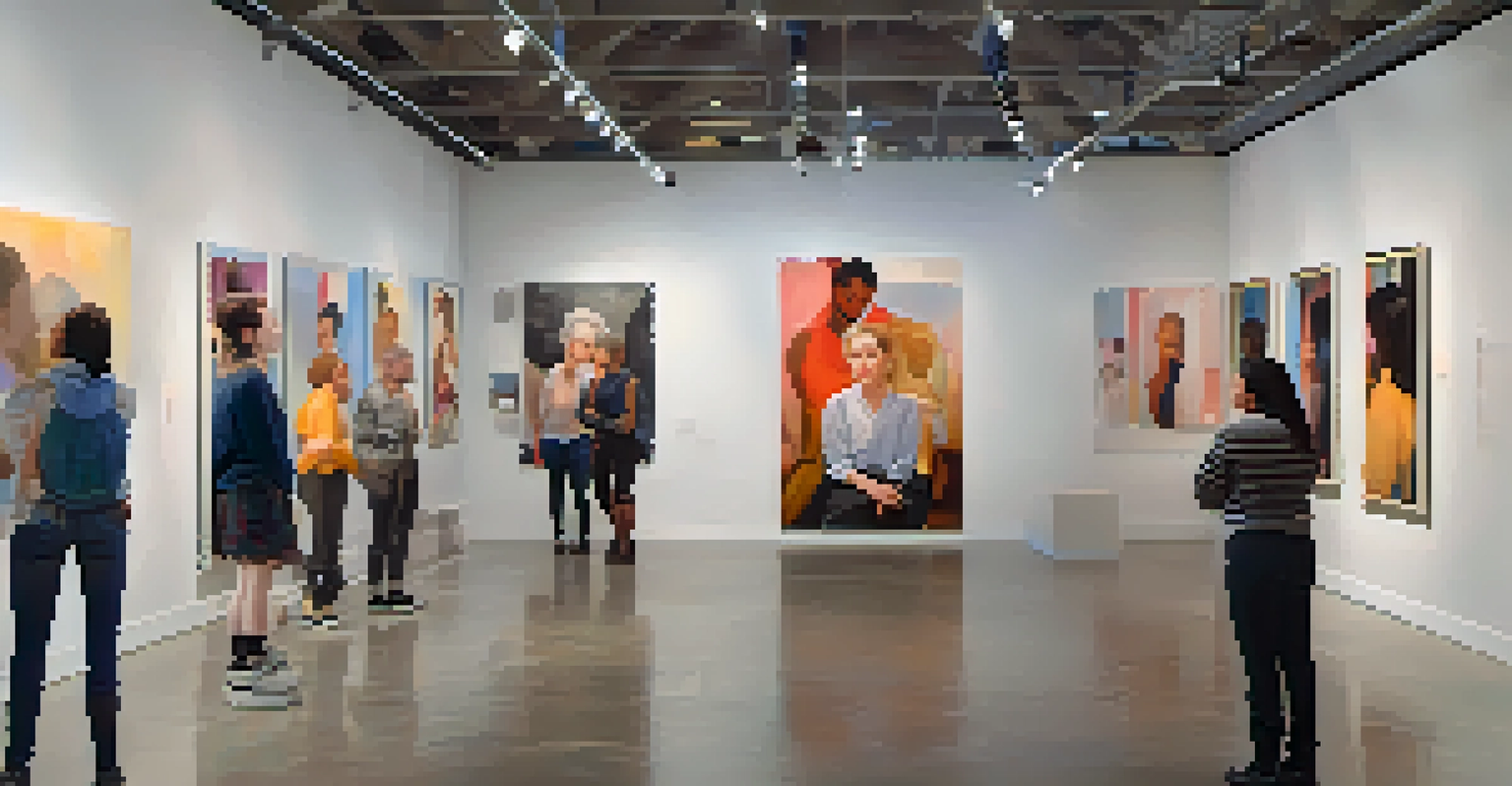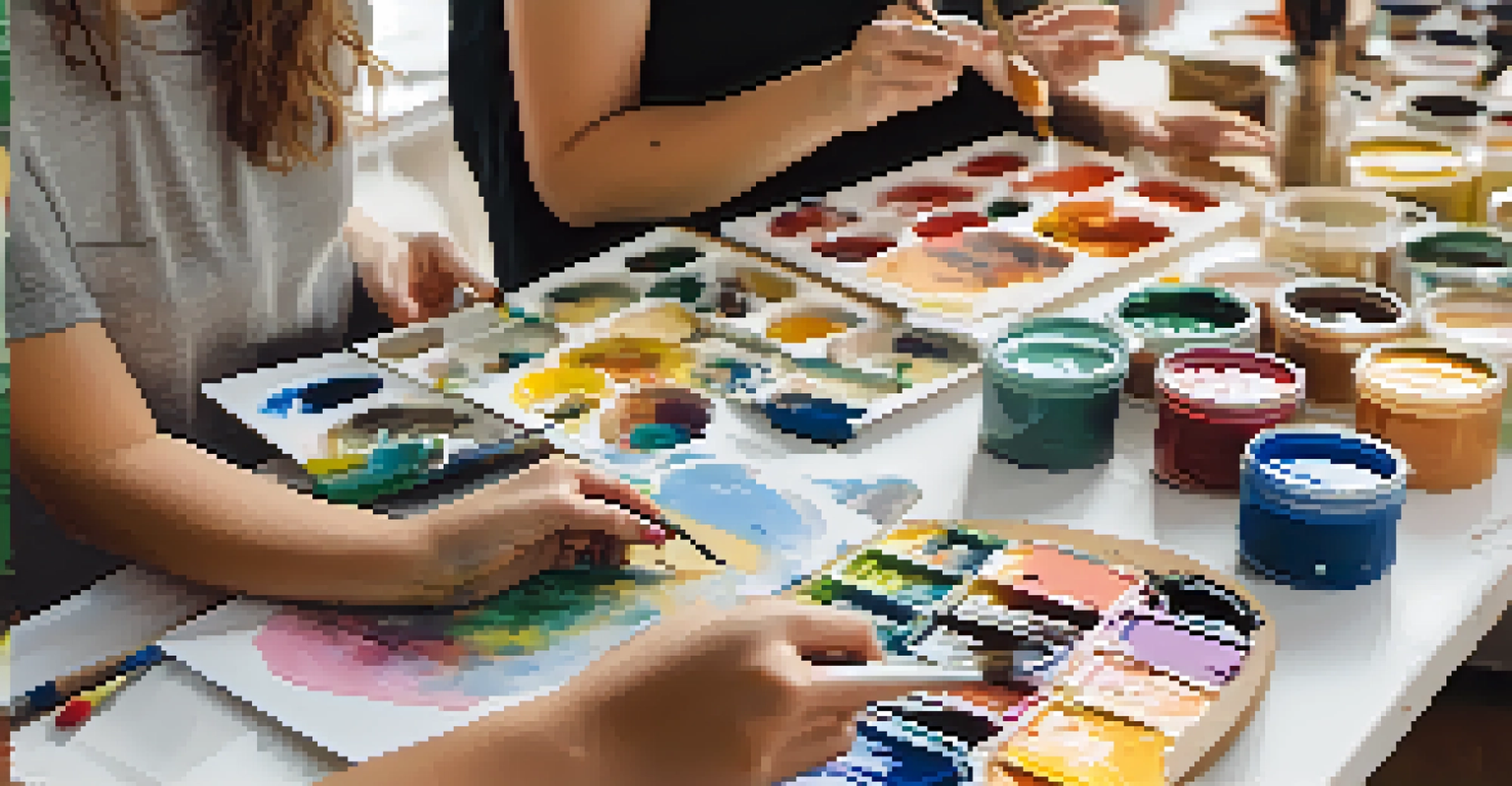Evaluating Art Through the Lens of Gender Studies Today

Understanding Gender Studies in Art Evaluation
Gender studies examines how gender influences our understanding of art, addressing the roles and representations of different genders within creative expressions. It enables us to look beyond the surface and understand the societal constructs that shape artistic narratives. By applying gender studies, we can uncover biases and assumptions that have historically marginalized certain voices in art.
Art is a reflection of society, and gender studies help us understand the nuances of that reflection.
This discipline encourages us to ask critical questions: Whose stories are being told? How do gender dynamics impact the interpretation of an artwork? By delving deeper, we can appreciate a richer tapestry of meaning that extends beyond the artist’s intent, revealing the complexities of identity and gender.
Related Resource
For instance, examining a painting through this lens might highlight how the depiction of women has evolved from objectification to empowerment, reflecting broader societal changes. This nuanced perspective is essential in appreciating the full context of art in relation to gender.
The Role of Feminist Art Criticism
Feminist art criticism has played a pivotal role in reshaping how we evaluate art by foregrounding women's experiences and contributions. It challenges traditional narratives that often overlook or diminish female artists and their work. By emphasizing the importance of female perspectives, feminist criticism not only celebrates these artists but also critiques the patriarchal structures that have historically dominated the art world.

For example, when analyzing the works of artists like Judy Chicago or Cindy Sherman, feminist critics reveal the cultural contexts that inform their art, thereby enriching our understanding of their messages. This approach also invites us to reconsider how we engage with art, encouraging a more inclusive dialogue that acknowledges various gender identities.
Gender Studies Transform Art Evaluation
Gender studies reveal how societal constructs shape artistic narratives, allowing for a deeper understanding of representation in art.
Ultimately, feminist criticism pushes us to broaden our definitions of what constitutes significant art. It invites us to explore the intersections of gender with race, class, and sexuality, creating a more comprehensive framework for evaluation.
Intersectionality: A Key Concept in Art Evaluation
Intersectionality is a crucial framework within gender studies that emphasizes how different social identities overlap and interact. This concept is vital in art evaluation as it allows us to understand how various factors, such as race, class, and sexuality, interact with gender to shape artistic expression. By considering intersectionality, we can appreciate the diverse experiences that inform an artist’s work.
Feminism is the radical notion that women are human beings.
For instance, the art of Kehinde Wiley or Frida Kahlo cannot be fully understood without acknowledging how their racial identities and gender intersect. This layered approach helps us see beyond singular narratives, revealing the multifaceted nature of identity in art creation and reception.
Related Resource
Incorporating intersectionality into our evaluations encourages a more holistic understanding of artworks, leading to richer discussions and insights that celebrate diversity in the art world.
The Impact of Social Media on Gender and Art
In today’s digital age, social media platforms have transformed how art is shared and critiqued, providing new spaces for artists to express gender identities. These platforms enable marginalized voices to reach wider audiences, challenging the traditional gatekeeping of the art world. By sharing their work online, artists can engage directly with viewers, fostering a sense of community and dialogue.
Additionally, social media has become a powerful tool for activism, allowing artists to address gender issues in real-time. Campaigns like #MeToo and #TimesUp have not only highlighted the struggles women face in the art industry but have also pushed for accountability and change, reshaping the discourse surrounding art and gender.
Feminist Criticism Reshapes Narratives
Feminist art criticism highlights women's contributions and challenges patriarchal norms, fostering inclusive dialogues around art.
This shift highlights the importance of considering contemporary contexts when evaluating art. The ways in which artists utilize social media to discuss their experiences can deeply inform our understanding of their work, making it essential to stay attuned to these evolving narratives.
Reevaluating Canonical Art Through Gendered Lenses
Reevaluating canonical art through gendered lenses involves revisiting well-known artworks to uncover hidden biases and overlooked narratives. Many masterpieces have been celebrated without acknowledging the gender dynamics at play, particularly how they reflect or reinforce societal norms. By applying a gender studies perspective to these works, we can challenge the traditional canon and advocate for a more inclusive art history.
For instance, considering the portrayal of women in the works of classic artists like Michelangelo or Picasso can reveal a pattern of objectification and idealization. This critical examination encourages us to question why certain artworks have been lauded while others, perhaps by female artists, have been relegated to the margins.
Related Resource
Ultimately, this reevaluation offers an opportunity to rewrite art history, making space for diverse voices and perspectives that have been historically ignored or silenced. It’s about expanding our understanding of what art can be and who gets to create it.
Art as a Medium for Gender Expression
Art serves as a powerful medium for expressing gender identity and challenging societal norms. Many contemporary artists use their work to explore their own experiences with gender, pushing boundaries and provoking thought. Through various forms, from painting to performance, these artists communicate complex narratives that resonate on personal and collective levels.
For instance, transgender artists like Zanele Muholi use photography to document and celebrate the lives of marginalized communities, confronting stereotypes and fostering understanding. Their art not only expresses individual identity but also highlights broader societal issues surrounding gender and representation.
Intersectionality Deepens Art Insights
By considering intersectionality, we uncover how overlapping identities influence artistic expression, leading to richer art evaluations.
By engaging with such artworks, viewers can gain insights into the lived experiences of diverse gender identities. This engagement fosters empathy and encourages critical conversations about gender, ultimately contributing to a more inclusive dialogue in the art world.
The Future of Gender Studies in Art Evaluation
The future of gender studies in art evaluation is promising, with a growing emphasis on inclusivity and diversity in both art creation and criticism. As more artists from various backgrounds emerge, the need for frameworks that accommodate different experiences becomes increasingly crucial. This evolution will likely challenge traditional art evaluations, leading to a more holistic understanding of art.
Moreover, as institutions and galleries begin to recognize the importance of diverse perspectives, we can expect a shift in how exhibitions are curated and art is presented. This change will not only benefit artists but will also enrich the viewing experience for audiences, inviting them to engage with a wider array of narratives.

Ultimately, the integration of gender studies into art evaluation will continue to shape the discourse around art, promoting a more equitable and representative art world. It’s an exciting time for both artists and audiences to explore the intersections of art and gender, fostering a vibrant cultural dialogue.